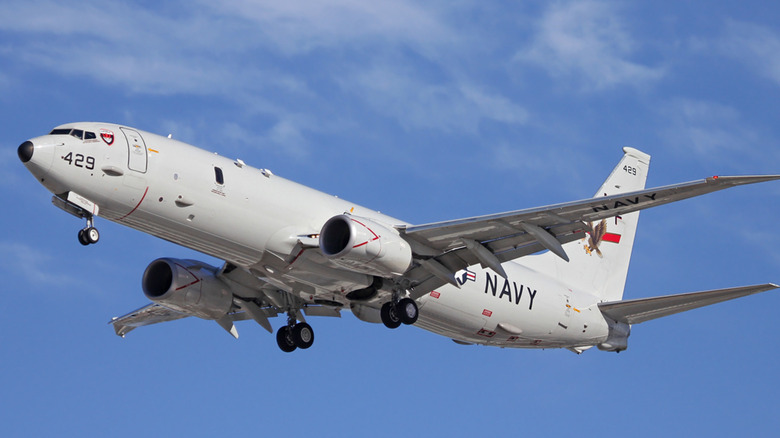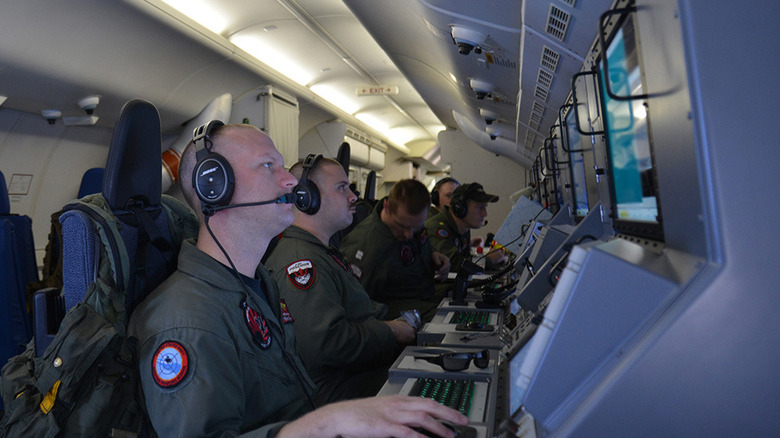Features That Made The Navy's P-8A Poseidon So Much Scarier Than It Looks
At first glance, Boeing's P-8 aircraft, nicknamed Poseidon, doesn't appear significantly different from the brand's 737 that many of us have flown on commercially — one of the most popular airliners in history. However, unlike your typical passenger flight, hidden inside its unassuming fuselage is an arsenal of weapons and technology that make the P-8 the preeminent choice for hunting down and destroying enemy submarines.
The jet is capable of far more than that. According to Boeing, the "P-8 is truly a multi-mission maritime patrol aircraft, excelling at anti-submarine warfare; anti-surface warfare; intelligence, surveillance and reconnaissance and search and rescue."
The P-8's story begins in the 1980s when the U.S. Navy wanted to replace its Lockheed P3 Orion. In a proposal process involving several different manufacturers including Lockheed Martin, Boeing was ultimately selected as the winner in 2004. The first production aircraft was delivered to the Navy in 2012 and in a rare moment for military projects, the P-8 had the distinction of coming in under budget.
[Featured image by Darren Koch via Wikimedia Commons | Cropped and scaled | GFDL 1.2]
It can annihilate an enemy sub from 30,000 feet
As tensions with the People's Republic of China rise, the P-8 plays an integral role in studying that country's nuclear ballistic missile submarines, along with the Triton unmanned aerial vehicle (UAV). To accomplish its share of the task, the jet utilizes advanced radar that's able to detect, identify, and track objects both above and below the ocean's surface. Also present are a brace of optical and infrared cameras that can scan the ocean at high resolution from cruising altitudes. Lastly, the Poseidon can deploy inflatable sonobuoys into the water that relay sounds transmitted through the water back to the aircraft.
If the need to attack does present itself, the Poseidon has five hardpoints — a reinforced location for mounting weapons — inside the rear of the cabin, with six additional hardpoints on the exterior. According to War History Online, "These hardpoints can carry a variety of weapons, including cruise missiles, anti-ship missiles, depth charges, mines, and torpedoes."
A recent addition to the jet's capabilities is High Altitude Anti-Submarine Warfare Weapon Capability (HAAWC), which allows Mk-54 torpedos to be launched from the safety of high-altitude flight. In layman's terms, that means the Poseidon can destroy a submarine from a height of 30,000 feet. That's quite an upgrade because previously, the P-8 had to descend to no higher than 100 feet above the water to deploy a torpedo.
The Poseidon has also proven indispensable in non-combat roles, as well. In 2014, a U.S. Navy P-8 assisted in the search for the missing Malaysia Airlines Flight MH370 in the Indian Ocean, and in 2015, a pair of Poseidon jets were deployed to help locate the El Faro, a large container ship that sunk in the Caribbean during Hurricane Joaquin.

